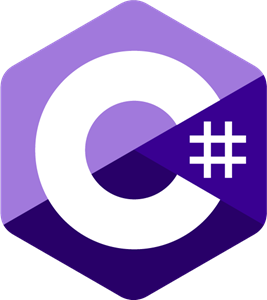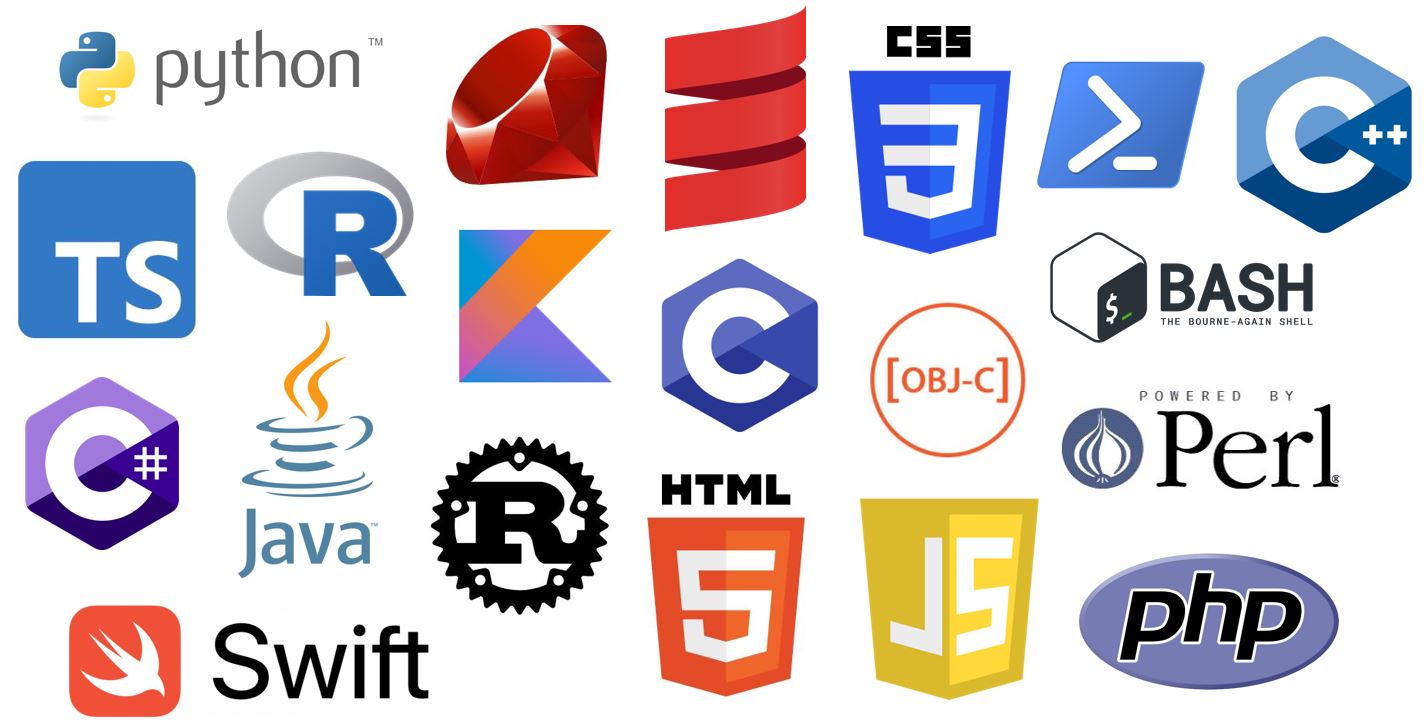
Without a doubt, programming is one of the most lucrative careers in the world today. However, there are hundreds of programming languages and not all are equal.
It doesn’t matter if you are new to programming or are a seasoned developer, knowing which programming languages are the most popular and WHY will give you an edge and help you decide which language(s) to learn.
So, what are the most popular programming languages in the world?
Let’s dive in…
Table of Contents
- The problem with most programming language ranking information
- How do we define programming language popularity?
- Look at the usage numbers!
- What are the most popular programming languages?
- Other Programming Languages to Consider
- Which Programming Language Should You Learn?
- Choose your language(s) and start coding 🙂
Disclosure: This article includes affiliate links that may provide a commission to me at no cost to you if you make a purchase through them.
The problem with most programming language ranking information
A number of websites list what they believe are the most popular programing languages. But most don’t mention how they rank them. So, why should you believe them? (Maybe you shouldn’t!)
Some sites base their rankings on the TIOBE index, which measures number of search engine results (“hits”) for a programming language, or PYPL which measures number of Google searches for programming language tutorials.
The problem with these two approaches is they only tell us how often people write about or search for programming languages on the web. And it doesn’t tell us anything about how often programming languages are actually used!
How do we define programming language popularity?
To determine how popular a programming language is there are a few dimensions you could consider. Such as, what are…
- The most web pages featuring a programming language?
- The most tutorial searches on Google?
- The most tutorials on the web?
- The most lines of code written?
- The most employers hiring for the language?
- The most salary paid per language?
- The most questions being asked?
- The most wanted to learn or loved?
- The most devices using a coding language?
- The most friendly or easiest to start learning?
- There are probably more ways to measure popularity…
With so many ways to measure popularity how do we choose?
Look at the usage numbers!
I prefer to look at how people are using code. Meaning, the amount of code written and also who is asking and answering questions about that code.
So, to rank which programming languages are the most popular we’ll take into account the number of GitHub projects (amount of code written) featuring the language vs the number of Stack Overflow tags (questions being asked and answered) for the language.
In other words, we’re defining popularity as: the amount of code written on GitHub vs number of questions asked on Stack Overflow.
Here is a chart visualizing those two dimensions (from July 2020):

I want to mention:
- The above method is not new, it was first published in 2010 and continues today at RedMonk.
- GitHub statistics I believe are sampled from code written into public repos so this likely does not cover code written into private repos (e.g. companies). However open source code is used by companies and is some of the best data we have to measure who is writing in which coding language.
- Also, Stack Overflow’s question/answer tags likely include people inside and outside of the open source world asking questions (includes private companies). Also a good source of data!
- Ben Frederickson took a very cool approach and has counted how many people on GitHub use each language. Only issue with that is the data is a few years old now and doesn’t also consider the questions people ask found on Stack Overflow. But worth examining more maybe in the future.
What are the most popular programming languages?
Based on the above criteria and ordered by popularity, the top programming languages in the world today include:
- JavaScript
- Python
- Java
- PHP
- C++
- C#
- Ruby
- CSS
- Typescript
- C
- Swift
- Objective-C
- R
- Scala
- Go
- Bash (Bourn-Again Shell)
- PowerShell
- Perl
- Kotlin
- Rust
- HTML
And those are just the top 20 based on the above visualization (data).
Absent from this list is HTML, which is a “markup” language and not considered a true programming language. But since there are hundreds of millions of web sites on the internet and they all use HTML, this tells me it’s pretty popular and I will add it to the list 🙂
Here, we will take a look at each of these languages and why they are popular and worth learning today. We also recommend the best course to learn each programming language.
#1: JavaScript
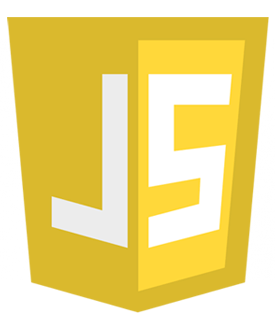
Average annual developer salary: $111,000
Number of developer jobs: 43,000
Where to learn it: Modern JavaScript from the Beginning
Overview
JavaScript, created in 1995 (and still going strong) takes the top spot for the most popular programming language.
But why?
Most websites (there are hundreds of millions) use JavaScript and is widely considered the go-to language for creating interactive web pages.
Its syntax is easy to use, making it easy for beginners to learn.
The most popular internet services in the world such as Facebook and Google are built using web web tools (e.g. “front-end” frameworks like React, Angular and Vue) all powered by JavaScript allowing developers to create modern, interactive web applications.
It’s worth noting, in 2009 something BIG happened: enter Node.js – a way to run JavaSrcipt as a server-side language! Today, many companies use JavaScript as both a front-end and back-end language to power their software.
And did you know, you can build desktop or mobile apps using JavaScript? Yes!
Wow, JavaScript really is everywhere and without a doubt is one of the most commonly used and in-demand programming languages in the world today.
Pros
- One of the most in-demand languages.
- Has a flexible, beginner-friendly syntax.
- Runs in the browser and on servers – means companies can have the same people work in both areas.
- Extensive resources and community support (over 12 million developers).
- Versatile and useful for building a wide range of applications, including desktop and mobile apps.
Cons
- Can be disabled by browsers to curb malicious threats.
- Depending on the browser (e.g. older browsers like Internet Explorer), the behavior of JavaScript may change.
- Weakly typed – this means data can unintentionally change from one form to another (sort of like “sloppy” programming) and may lead to more bugs. However TypeScript (a superset of JavaScript) aims to fix this.
Where it’s used
JavaScript is used to add interactive features on websites, however more and more startups and tech companies are favoring JavaScript for backend use due to its simplicity and speed. And for desktop app development.
Where to learn it
- Modern JavaScript From The Beginning (also check our our best JavaScript books review)
What the course covers
A front to back course on how to build real-world projects with pure JavaScript.
- Instructed by: Brad Traversy
- Skill level: Beginner
Why this course
A glowing 4.7 stars rating from more than 76k students. And you get a certificate upon completion.
#2: Python
Overview
Hands down, Python is the most popular programming language of all time. Despite being an older language (first release in 1991), it has maintained an upward trajectory for many years and is has gained big popularity in recent years.
So why is Python so popular?
Well, for starters python.org states:
Python is a programming language that lets you work quickly
and integrate systems more effectively.
“Work quickly” means the language syntax is very simple to read/write and understand. And this makes Python one of the most popular languages to learn for beginners.
“Integrate systems more effectively” means not everything you do always happens in Python. Instead Python is really good at acting as the “glue” to bring together other applications/systems.
Also to note, Python has been gaining a lot of popularity because of the rise of artificial intelligence and machine learning. Again Python is easy to use relative to other coding languages and has led to a number of libraries created specifically for for AI and ML.
Last but certainly not least, it’s one of the programming languages with the highest salary 🙂
Pros
- Considered a universal programming language suited to a wide array of applications
- Clean and intuitive code makes it very easy to learn
- Easily integrates with other programming languages
- Excellent community support, libraries, and frameworks
Cons
- Less popular for mobile applicable in developing vs other languages
- An interpreted language and not as fast as “compiled” languages like C or Go
Where it’s used
Web and desktop applications, network servers, video games, data science, IoT, robotics, artificial intelligence, deep learning, and machine learning.
Where to learn it
- Python for Everybody (also check out our best Python books review)
What the course covers
The basics of programming and analyzing data with python.
- Instructed by: Charles Russell Severance
- Skill level: Beginner
Why this course
With more than 900k students and a stellar 4.8 star rating, it’s hard to go wrong with Python for Everybody.
#3: Java

Average annual developer salary: $110,000
Number of developer jobs: 48,000
Where to learn it: Java Programming Masterclass for Software Developers
Overview
Ever since it’s launch in the 90s, Java has consistently remained among the top 3 most popular, in-demand, and highest paying programming languages.
Not only is it a major language for Android app development, companies such as Google, YouTube, Amazon, Netflix, and Twitter all rely on Java for backend development.
Pros
- Java coding skills are in high demand
- The most popular Android language
- Good language to start with to develop a programmer’s mind set
- Runs on a wide range of systems and devices
- Extensive network and plethora of open-source libraries
Cons
- A higher-level language with plenty of new concepts to learn
- Bulky and thus not ideal for cloud-based applications
- Oracle, which owns Java, charges a licensing fee for the Java Development Kit
Where it’s used
Java is the go-to coding language for enterprise server side and desktop applications, Android applications, and web development. Other uses include games and database software.
Where to learn it
What the course covers
The core Java skills employers look for.
- Instructed by: Tim Buchalka
- Skill Level: Beginner
Why this course
A comprehensive Java programming course that will equip you with the skills you need to build with Java and get a job. Java Certification included.
#4: PHP
Overview
Even though PHP is on the decline, the fact that the vast majority of websites including WordPress, Yahoo, and Facebook are built with PHP has maintained its position as one of the most popular programming languages for backend development.
Pros
- 80% of websites on the internet use PHP
- Plenty of powerful frameworks, tools, and support
- Easy for beginners to learn and debug
Cons
- Security and error management is lacking
- Even though most websites use it, its use is declining
Where it’s used
Developers mainly use PHP to write server-side scripts. It also works for command-line scripts, desktop applications, and databases.
Where to learn it
Coursera: Building Web Applications in PHP
What the course covers
PHP as well as HTML and CSS
- Instructed by: Dr. Charles R. Severance of the University of Michigan.
- Skill level: Beginner to intermediate
Why this course
A university-backed web developer course that uses theory as well as practical assignments to make it easy to grasp concepts.
#5: C++
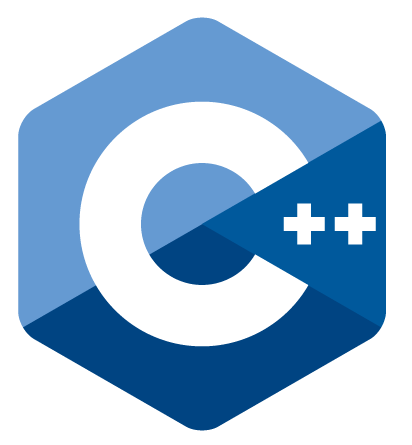
Average annual developer salary: $109,000
Number of developer jobs: 13,000
Where to learn it: C++ Tutorial for Complete Beginners
Overview
As an improved version of C, C++ is a high-performance object-oriented language and one of the most popular programming languages. Programs such as Firefox and Adobe and many video games are based on C++.
Pros
- C++ has a large set of libraries and compilers
- High-speed and stable programming language
- Powerful language with a very fast runtime
- Allows low-level access to computer hardware
Cons
- Features-rich and with a complicated syntax, C++ has a steep learning curve for beginners
- It’s impossible to check for bugs while the system is running as the language doesn’t support run-time checks
Where it’s used
C++ is the go-to language whenever high-level performance is critical. It’s used to program systems that involve multiple devices and platforms, operating systems, video games, simulations, high-frequency trading, GPU, containerization, and cloud computing.
Where to learn it
What the course covers
The C++ language from scratch, object-oriented programming, and advanced C++ concepts.
- Instructed by: Tim Buchalka
- Skill level: Beginner
Why this course
You will be able to build C++ programs and apply to jobs with confidence.
#6: C# (C Sharp)
Overview
C#, which is pronounced as C sharp, is an object-oriented programming language created by Microsoft in 2000.
It’s the main language for developing Microsoft and Windows applications and the most popular language for developing games.
Pros
- Completely integrated with Microsoft .NET library
- Ideal for all types of Windows development
- Supports working with shared codebases
- Can be updated and scaled automatically
- Has a rich library of data types and functions
Cons
- Syntax is similar to that of A and thus challenging to learn
- Dependent on Microsoft’s .Net, which reduces its flexibility
Where it’s used
C# is used in creating windows software, app and web development, back-end programming, AR and VR development, 3D and 2D video games, and more.
Where to learn it
What the course covers
A primer on the C# language, object-oriented programming, and everything you should know to make the most of the language.
- Instructed by: Kerem Aydin
- Skill Level: Beginner
Why this course
A fun and interactive course that will equip you with the knowledge and skills you need to become a C# developer.
#7: Ruby

Average annual developer salary: $112,506
Number of developer jobs: 4,267
Where to learn it: Learn to Code with Ruby
Overview
Ruby is an elegant language that’s popular with both tech startups and coding beginners.
Tech startups favor its Ruby on Rails web application framework, which allows them to get their web applications up and running fast. Being a dynamic language, Ruby is also the best language for developing prototypes.
For programming beginners, it’s one of the easiest to learn and get started writing code in.
Pros
- Flexible dynamic language
- Syntax is easy to learn and write
- Has powerful web frameworks
- Has big open source projects
- High-level general purpose language
- Friendly community of users
- Mature and stable language
Cons
- Being a dynamic language, it’s not easy to scale. This is why Twitter upgraded to Java.
- As an interpreted language, it’s also considered slow
Where It’s Used
Thanks to it’s popular Ruby on Rails framework, Ruby is most used in creating web applications.
It also finds applications in prototyping, data analysis, system utilities, and servers.
Twitter, Airbnb, Shopify, and Fiverr are examples of famous companies that use or have used it.
Where to learn it
What the course covers
Object-oriented programming with ruby, Ruby objects, challenges, and algorithms.
- Instructed by: Boris Paskhaver
Why this course
Suitable for absolute programming beginners.
#8: CSS

Average annual developer salary: $106,975 (front end developer)
Number of developer jobs: 12,000 (front end developer)
Where to learn it: Advanced CSS and Sass: Flexbox, Grid, Animations and More!
Overview
CSS (Cascading Style Sheets) is one of the top front end web development languages.
It allows website developers to easily customize the presentation of web pages.
Pros
- Creates responsive presentations
- Compatible with XML languages
- Improves page speed
- Saves time by allowing you to reuse code
Cons
- It renders differently on different browsers
Where It’s Used
Front end web development. It’s used to define the layout, font, colors, and other visual aspects of websites.
Where to learn it
What the course covers
Flexbox, grid layouts, responsive design, and so much more.
- Instructed by: Jonas Schmedtmann
Why this course
A modern CSS tutorial with 4.8 rating by about 30k students!
#9: TypeScript

Average annual developer salary: $110,000
Number of developer jobs: 43,000
Where to learn it: Understanding TypeScript – 2021 Edition
Overview
TypeScript is not only a popular programming language but also one of the fastest growing.
This is because it’s like JavaScript but with a richer toolbox (TypeScript has everything JavaScript has and more).
The advantage it has over JavaScript is it’s static type-checking capability, which enables developers to reduce the number and severity of bugs, especially once code is running.
Pros
- Allows static type-checking
- Open source language
- Supported by Microsoft
- Supported by various IDEs and text editors
- Compiles to JavaScript
Cons
- Requires compilation, which can be time consuming
Where It’s Used
TypeScript has become a popular language for developing large scale web applications. It’s also applicable in desktop applications.
Where to learn it
What the course covers
Everything you need to know to use TypeScript from the basics, features, workflows, and how to use it.
- Instructed by: Maximilian Schwarzmü
Why this course
The best selling TypeScript course with a 4.7 rating from more than 20K students.
#10: C

Average annual developer salary: $104,000
Number of developer jobs: 12,000
Where to learn it: C Programming For Beginners – Master the C Language
Overview
Developed more than 50 years ago, C is the oldest programming language. Even more impressive is that it still runs the modern world.
Computer systems and hardware are programmed using C, and so are modern devices such as cell phones. It’s also one of the top programming languages for Internet of Things devices such as smartwatches.
Pros
- Great for learning the fundamentals of programming
- Gives more control over memory management
- Testing, debugging, and maintenance are easy
Cons
- A very strict coding language and thus not easy to learn
- Not applicable in websites and smartphone apps development
Where it’s used
C is a low level systems programming language. It builds operating systems, embedded systems, telecommunication systems, wired networks, and Internet of Things systems.
Where to learn it
What the course covers
C concepts such as data types and pointers, and how to program with C.
- Instructed by: Tim Buchalka
- Skill level: Beginner
Why the course
Teaches all the essentials of becoming a successful C developer in a well organized manner.
#11: Swift
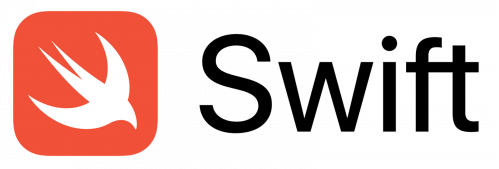
Average annual developer salary: $84,000
Number of developer jobs: 30,000
Where to learn it: iOS Swift – The Complete iOS App Development Bootcamp
Overview
Swift is the Apple-backed programming language for developing iOS and macOS apps. It’s no surprise that it’s one of the most popular new programming languages and one of the best modern languages to learn now. Best of all, you don’t need prior coding skills in order to learn Swift.
Pros
- Supported by Apple for iOS and macOS app development
- Scalable and easy to add features and functions
- Swift syntax is English-like and very easy to learn
- Creates clean and fast code
- Works with Objective-C and integrates with any technology
Cons
- Relatively new language with limited resources
- Only compatible with iOS7 or newer apps
Where it’s used
Besides Apple applications, developers are also using Swift in systems programming, client-side development, deep learning applications, and Internet of Things.
Where to learn it
What the course covers
Swift iOS app development from the beginning to the end.
- Instructed by: Dr. Angela Yu
- Skill level: Beginner
Why this course
The course will transform you from a beginner to an iOS App Developer. You will be able to build apps to sell or showcase when applying for jobs.
#12: Objective-C

Average annual developer salary: $110,000
Number of developer jobs: 4,000
Where to learn it: iOS 12 & Objective-C – Complete Developer Course
Overview
Until 2014 when apple announced Swift as their official development language, Objective-C was the main language for the development of Mac OSX and iOS applications.
However, the sheer number of legacy apps that are based on Objective-C has ensured it’s still one of the most used and in-demand programming languages today.
Pros
- Flexible language with a dynamic runtime
- Emphasis on reusability of code
- Quick and easy to learn.
- Superset of the C-language
Cons
- With the rise of Swift, Objective-C is a language on the decline
Where It’s Used
Maintenance and upgrading of existing apps. Unfortunately for Objective-C, new OSX and iOS apps are being developed with Swift
Where to learn it
What the course covers
A complete iOS 12 and Xcode 10 course that will make you an Objective C iOS developer.
- Instructed by: Aaron Caines
Why this course
Create 25 iOS 12 applications from fun and simple games to utility apps
#13: R

Average annual developer salary: $80,000
Number of developer jobs: 3,000
Where to learn it: R Programming Course A-Z™: R For Data Science With Real Exercises
Overview
As institutions seek to make sense of massive data for intelligence purposes, data analysts are in high demand and R is the most popular programming language with data scientists.
Pros
- Number one language for data scientists
- Has an active developer community for support
- Excellent framework and integrated libraries
- Compatible with Linux, Windows, and Mac OS
- A wide variety of packages available
Cons
- Does not have strict guidelines and its security is lacking
- Moderate to steep learning curve
Where it’s used
In addition to statistical analysis and visualization, R is a top language in machine learning
Where to learn it
What the course covers
Programming in R and R studio and applying programming in data analysis.
- Instructed by: Kirill Eremenko
- Skill level: Beginner
Why this course
Does not require prior statistical skills and uses step by step instructions and real-life examples to make learning R programming easier.
#14: Scala
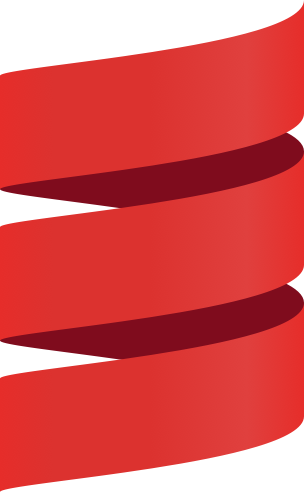
Average annual developer salary: $87,000
Number of developer jobs: 4,500
Where to learn it: Scala & Functional Programming for Beginners | Rock the JVM
Overview
Although Scala is relatively new in the programming world, it’s already gracing lists of the most popular coding technologies.
It’s popularity is tied to the popularity of Java. Like Java, it’s an object-oriented language with a super fast runtime.
What elevates it beyond JAVA is that it combines both object-oriented and functional paradigms allowing developers to write high-quality code that looks like pure math.
It also allows coders to create and manage their own data types to keep bugs at bay during runtime.
Pros
- Powerful with lightning fast runtime
- Both object-oriented and functional
- Statically typed language
- Supports cloud based applications
- Minimizes bugs right from the development stage
- Runs on both JavaScript and JVM runtime
- Supports concurrent development
- Scalable with extensions
- Simple learning curve
Cons
- The hybrid nature of the language can make some information confusing
Where It’s Used
Scala is a multi-purpose computer programming language used in systems applications development, cloud based applications, and mobile apps.
Where to learn it
What the course covers
Scala basics, functional programming, object-oriented programming, and real-life examples.
- Instructed by: Daniel Ciocirlan
Why this course
Beyond making you a scala programmer, it will also teach you scala frameworks like Spark and Akka.
#15: Go

Average annual developer salary: $110,000
Number of developer jobs: 4,000
Where to learn it: Go: The Complete Developer’s Guide
Overview
Go or Golang is a system-level programming language developed by Google to make processing massive amounts of data fast and efficient.
These advantages have made it a top language for distributed systems and cloud infrastructure and one of the fastest-growing programming languages.
Pros
- Backed by Google
- Combines functional and object-oriented aspects
- Makes compilation and execution fast and efficient
- Clean and readable syntax makes it easy to learn
- Compiled and statically-typed thus very fast and secure
Cons
- Its library support is not yet well-developed
- The developer community is not robust yet
Where it’s used
Go is used for building APIs and web servers, managing massive codebases, and also applied in machine-learning packages. Google, Uber, Twitch, Netflix, and Dropbox are examples of companies already taking advantage of Go.
Where to learn it
What the course covers
The fundamentals as well as the advanced aspects of Golang.
- Instructed by: Stephen Grider
- Skill level: Beginner
Why this course
The course covers everything about the Golang language and has a nice, easy to follow structure.
#16: Bash (Bourn-Again Shell)
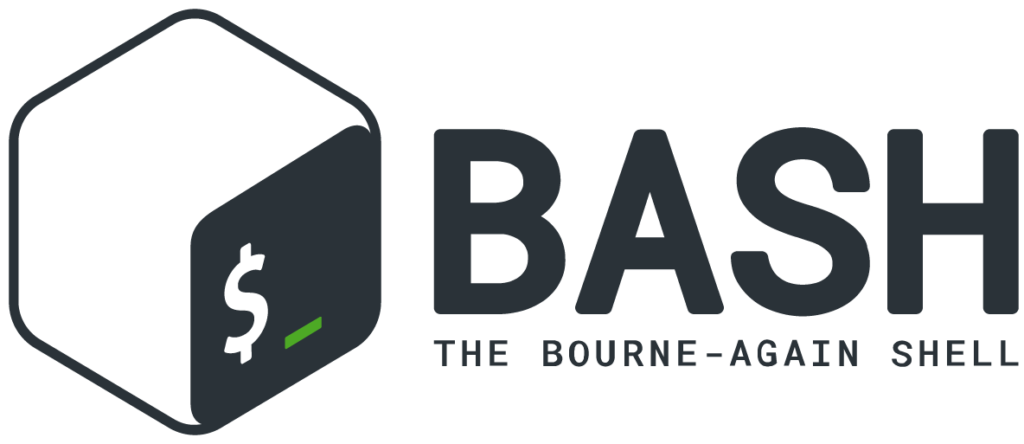
Average annual developer salary: $80,000
Number of developer jobs: 4,400
Where to learn it: Shell Scripting: Discover How to Automate Command Line Tasks
Overview
Shell is the most used computer scripting language in many IT departments.
It simplifies the work of IT staff and other developers by enabling them to write commands to automate routine tasks like installing and uninstalling apps and backing up files.
Pros
- Allows command-line interfacing
- Allows automation of repetitive tasks
- Many variations of the language
- Works with Mac, Linux, and Unix systems
Cons
- A minor mistake can do major damage
Where It’s Used
IT professionals and system administrators use Shell languages to manage operating systems and automate tasks.
Where to learn it
What the course covers
How to write shell scripts for Linux, Unix, & Mac and apply it the language in real life.
- Instructed by: Jason Cannon
Why this course
Takes a practical approach and teaches even advanced bash shell features.
#17: PowerShell

Average annual developer salary: $109,349
Number of developer jobs: 2,500
Where to learn it: Learning Windows PowerShell
Overview
PowerShell has been around since 2006 and was originally only available for Windows.
It’s popularity skyrocketed when Microsoft opened it up to run on MacOS and Linux as well.
It’s a type of command-line scripting language that allows automation of critical tasks and supports cloud-based operating systems.
To be specific, Microsoft calls it a “cross-platform task automation solution made up of a command-line shell, a scripting language, and a configuration management framework“.
So it’s a little bit like the glue that can orchestrate different applications including those running in the cloud.
Pros
- Powerful scripting language
- Object-oriented and has a pipeline
- Open source language
- Simplifies systems administration
- Very easy to learn
Cons
- PowerShell can expose the server to security risks
Where It’s Used
Like Shell, PowerShell is used by IT professionals for system administration and task automation.
Where to learn it
What the course covers
A comprehensive course that covers everything you need to use PowerShell, from the basics to the commands.
- Instructed by: Infinite skills
Why this course
No prior experience required to grasp what the course teaches.
#18: Perl

Average annual developer salary: $80,000
Number of developer jobs: 3,000
Where to learn it: Learn Perl 5 By Doing It
Overview
When it was first developed decades ago, Perl was simply intended for manipulating text documents.
Today, its widespread implementation in different programming fields has made it one of the most used and sought after programming skills.
Pros
- Incredibly powerful and versatile
- Easy to learn and use
- Supports database integration
- Sought after by large organizations
- Offers Unicode support
- Easily extendable
Cons
- It’s flexibility can lead to bad coding habits
Where It’s Used
Perl is a general purpose programming language with applications in text analysis, web development, network programming, and systems administration.
Where to Learn It
What the course covers
Everything from the basics, regular expressions, to quantifiers.
- Instructed by: John Purcell
Why this course
Uses a practical teaching approach that makes it very easy to grasp the concepts.
#19: Kotlin

Average annual developer salary: $127,000
Number of developer jobs: 2,000
Where to learn it: The Complete Kotlin Developer Course
Overview
Developed as a better version of Java, Kotlin is now the official Android programming language.
This explains why it has grown to become one of the most popular programming languages despite being one of the newest programming languages.
That it’s one of the highest paying programming skills certainly doesn’t hurt it’s popularity.
Pros
- Official Android development language
- Blends object-oriented and functional programming features
- One of the highest paying programming jobs
- It’s not code-heavy and thus easy to learn
- Compatible with Java and compiles into JavaScript
Cons
- Its compilation speed fluctuates
Where it’s used
Besides Android app development, Kotlin is a widely used language in everything from web and desktop development to server-side development.
Where to learn it
What the course covers
The Kotlin programming language itself and how to use it to develop Android apps.
- Instructed by: Rob Percival and Nick Walter
- Skill level: Beginner
Why this course
The course teaches the theory of the language as well as the practical side.
#20: Rust
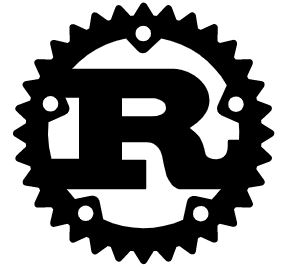
Average annual developer salary: $103,000
Number of developer jobs: 1,020
Where to learn it: Learn Rust by Building Real Applications
Overview
Many developers vote for Rust as their favorite programming language year after year. So why do coders love it this much?
Not only is Rust an incredibly fun language to use, but it also emphasizes speed and memory safety.
With Rust, many memory security issues that are common with many popular programming languages are a thing of the past.
These advantages have also made it popular with large tech companies like Dropbox and Yelp.
Pros
- Modern programming language
- Very fun to use
- Lightening fast
- Ensures memory safety
- Easy to run with a great community
- Supports concurrent development
- Functional and procedural paradigms
Cons
- With syntax similar to C and C++, it offers a steep learning curve for beginners
Where It’s Used
Similar to C and C++, Rust is a low-level systems programming language mainly used in building system applications.
It’s high-performance also makes it ideal for developing concurrent systems
Where to learn it
What the course covers
The basics of rust, memory management and safety, and troubleshooting.
- Instructed by: Lyubomir Gavadinov
Why this course
The entire course is practical – you will learn by building apps and solving real world problems.
#21: HTML
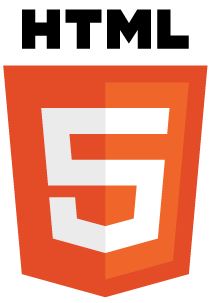
Average annual developer salary: $107,241
Number of developer jobs: 38,718
Where to learn it: Web Design for Beginners: Real World Coding in HTML & CSS
Overview
Although HTML is not really a programming language (it’s a Hypertext markup language), it’s what just about every website is built with.
It’s a fundamental skill for front end developers and anyone else who produces website content including designers, content managers, and writers.
Pros
- Easy to learn and use
- Most search engine friendly language
- Platform independent language
- Compatible with other languages
- Supported by most browsers
Cons
- HTML code can be complex and doesn’t result in eye-pleasing content
Where It’s Used
Front end developers and content creators use it to structure web content. That means basically every website in the world is using HTML. Typically HTML is used within the “presentation” layer or part of a software web application, like a WordPress website or any service like Google, Facebook, Twitter, etc.
Where to learn it
What the course covers
HTML5, semantics, forms, tables, CSS3, responsive design, Sass and more!
- Instructed by: Brad Schiff
Why this course
Go from a complete newbie to a skilled web designer
Other Programming Languages to Consider
The following programming languages are also popular and growing fast, and thus worth learning:
- Matlab is popular with scientists, engineers, and data analysts. It’s also one of the best languages for machine learning, deep learning, and image processing applications.
- Dart is an optimal language for creating multi-platform applications (with an emphasis on UI development). For example, it creates apps that run on both Windows and iOS.
- Elm is one of the newest languages but quite popular with front-end developers, as it compiles to JavaScript. With Elm, you can create fast-executing UIs that encounter zero errors at runtime.
- Erlang Originally designed to solve telecommunication challenges, it’s concurrent design has made it a popular language for distributed systems including games and e-commerce apps.
- Elixir is a functional computer programming language based on Erlang. With support for advanced functionalities, it’s a top go-to language for large-scale distributed and concurrent projects like social networks.
- Scheme takes a simple approach to developing systems applications and boasts powerful extensions. Google and Reddit are examples of companies using it.
- Haskell is a statically typed language for developing modern applications. Facebook’s anti-spam is Haskell based.
Which Programming Language Should You Learn?

If you’re just getting into coding, JavaScript and Python are among the best languages to learn first. They are easy to learn and their demand is huge.
What programming language you should learn also comes down to your goals and interests. To help you out, here are some suggestions:
- Want to do web development? JavaScript, PHP and even Python are great for that. Don’t forget HTML and CSS 🙂
- Do you want to become a mobile app developer? Swift and Kotlin are the languages mobile apps are built in today.
- Are you set on becoming a systems developer? C, C++, and rust are the languages to get you there.
- Got ideas for epic video games? C++ and C# are what you need to create powerful games.
- Dream of working at a large company? C#, Java, JavaScript and PHP are the top in-demand skills in the corporate world.
- Are you in the field of data analysis? R and MATLAB are the go-to languages for data scientists.
- If you’re an IT professional, Shell, PowerShell, and PERL can simplify your job by enabling you to automate mundane tasks.
Choose your language(s) and start coding 🙂

The field of programming is always evolving. Whether you’re looking to go with code or are already a coder, it’s important to stay on top of the trends in the industry.
The most popular programming languages featured above are the most in-demand in today’s world. Learning any one of them is worth the money, time, and effort. All you have to do is select the language that aligns with your goals and interests.
You can also visit our big list of places to learn to code for free to help jump start your journey into coding.
Mike is the creator of Go With Code and a coder at heart 🙂


